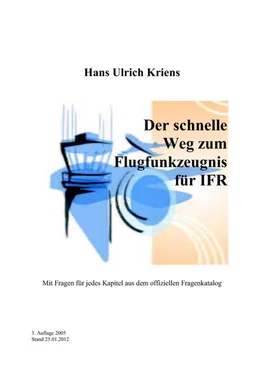SS Sunset
SSE South-southeast
SSR Secondary surveillance radar
SST Supersonic transport
SSW South-southwest
ST Stratus
STA Straight in approach
STA Scheduled time of arrival (aircraft on blocks)
STAR Standard (instrument) arrival
STD Scheduled time of departure (aircraft off blocks)
STF Step down fix
STOL Short take-off and landing
STS Status
SUBJ Subject to
Sun Sunday
SUPPS Regional supplementary procedures
SVC Service message
SVCBL Serviceable
SW Southwest
SWC Significant weather chart
SWY Stopway
t Ton(s) (weight)
T Temperature
TA Transition altitude
TACAN UHF Tactical Air Navigation Aid
TAF Aerodrome forecast
TAR Terminal area surveillance radar
TAS True airspeed
TAX Tyxiing or taxi
TC Tropical cyclone
TCAS Traffic Alert and Collision Avoidance System
TCH Threshold crossing height
TCU Towering cumulus
TDZ Touchdown zone
TEL Telephone
TEMPO Temporary or temporarily
TFC Traffic
TGL Touch-and-go landing
THR Threshold
Thu Thursday
TIL Until
TKOF Take-off
TLOF Touchdown and lift-off area
TMA Terminal control area
TMZ Transponder Mandatory Zone
TODA Take-off distance available
TOP Cloud top
TORA Take-off run available
TP Turning point
TR Track
TRA Temporary reserved airspace
TRANS Transmits or transmitter
TS Thunderstorm
TSGR Thunderstorm with hail
TSSA Thunderstorm with duststorm or sandstorm
TT Teletypewriter
Tue Tuesday
TURB Turbulence
TVOR Terminal VOR
TWP Turning waypoint
TWR Aerodrome control tower or aerodrome control
TWY Taxiway
TXT Text
TYP Type of aircraft
UAC Upper area control centre
UDF UHF direction finding station
UFN Until further notice
UHF Ultra high frequency (300 to 3000 MHz)
UIC Upper information centre
UIR Upper information region
UNL Unlimited
UNREL Unreliable
U/S Unserviceable
USAFE US Air Force – Europe
USAEUR US Army – Europe
UTA Upper control area
UTC Co-ordinated Universal Time
VA Volcanic Ash
VAL Visual approach and landing chart
VAR Magnetic variation
VASIS Visual approach slope indicator system
VDF VHF direction finding station
VFR Visual flight rules
VHF Very high frequency (30 MHz to 300 MHz)
VIA By way of …
VIO Severe (used to qualify interference or static reports)
VIP Very important person
VIS Visibility
VLR Very long range
VMC Visual meteorological condition
VOLMET Meteorological information for aircraft in flight
VOR VHF Omnidirectional radio range
VORTAC VOR and TACAN combination
VOT VOR airborne equipment test facility
VRB Variable
Vs Stalling speed
VTOL Vertical take-off and landing
W West or western longitute
W White
WAFC World Area Forecast Centre
WAFS World Area Forecast System
WDI Wind direction indicator
Wed Wednesday
WEF With effect from or effective from
WGS World Geodetic System
WIE With immediate effect or effective immediately
WIP Work in progress
WNW West-northwest
WS Wind Sheer
WSPD Wind speed
WSW West-southwest
W/T Wind/temperature
WX Weather
XBAR Crossbar (of approach lighting system)
XS Atmospheric
Y Yellow
YCZ Yellow caution zone (runway lighting)
yd Yard(s)
YR Your
Measurements
Air Pressure
Hektopascal (hPa)
Sometimes we also find inch in older instruments
Altitudes
Will be expressed and transmitted in feet
Breaking action
Friction coefficient
This is a part of the permanent snow plan applicable for the international airports. The mean friction coefficient will be indicated for each third for the runway. The breaking action will be measured continuously by the Skiddometer, the Surface-Friction-Tester or Tapley-Meter. All friction coefficients are measured and will be given on the basis of the following
| 0,40 and above |
good |
Code 5 |
| 0,39 – 0,36 |
medium to good |
Code 4 |
| 0,35 – 0,30 |
medium |
Code 3 |
| 0,29 – 0,26 |
medium to poor |
Code 2 |
| 0,25 and below |
poor |
Code 1 |
| unreliable |
unreliable |
Code 0 |
The horizontal velocity will be indictated in nautical miles per hour and expressed in knots
Nautical mile , NM and tenth of it.
1 nautical mile is equal of circle-minute of a great-circle. 1 NM = 1,852 km.
The identification of runway is expressed by numbers which indicate the magnetic direction of the runway.
The units of measurement used in flight operation for wind direction and velocity, except for take-off and landing, will be indicated in degrees true and knots.
(This means that wind direction readings given by the control tower for landing or departing aircraft are magnetic.
We use worldwide in air traffic control the united time co-ordinated (UTC)
When transmitting the time, if there is no possibility of confusion, the minutes (two digits) are used only.
Feet per minute (ft/min)
Will be expressed in Metres or Kilometres
1. Select the correct definition for "estimated time of arrival" in respect to IFR flights.
a) The time at which it is estimated that the aircraft will arrive over that designated point defined by reference to navigation aids, from which it is intended, that an instrument approach will be commenced
b) The time at which it is estimated that the aircraft will arrive over the designated point defined by reference to visual aids, from which it is intended, that an approach will be commenced
c) The time at which the aircraft will actually arrive over that designated point defined by reference to navigation aids, from which it is intended, that a visual approach will be commenced
d) In any case that time at which the aircraft will arrive over the aerodrome
2. What does the term "aeronautical station" mean?
a) A station in the aeronautical mobile service located on land or, in certain instances, on board of a ship or on a platform at sea
b) Any station established to exchange radiotelephony communications
c) A station in the aeronautical telecommunication service located on land or on board of an aircraft to exchange radiotelephony communications
d) A station forming part of the aeronautical telecommunication network
3. What does the term "blind transmission" mean?
a) A transmission of information relating to air navigation that is not addressed to a specific station or stations
b) A transmission of messages relating to en-route weather information which may affect the safety of aircraft operations that is not addressed to a specific station or stations
c) A transmission where no reply is required from the receiving station
Читать дальше












